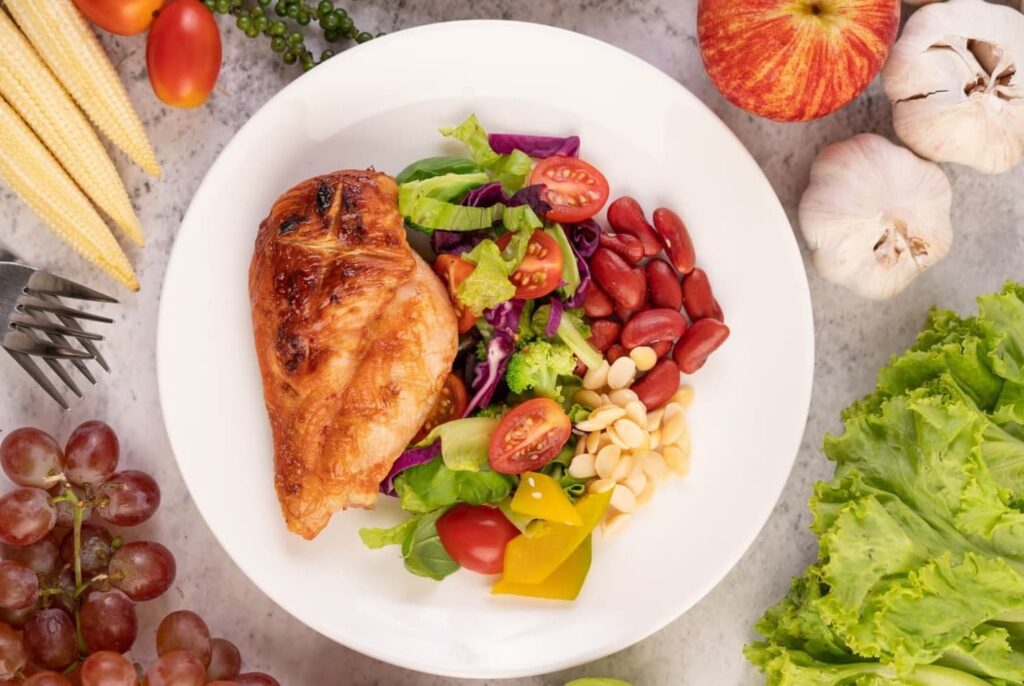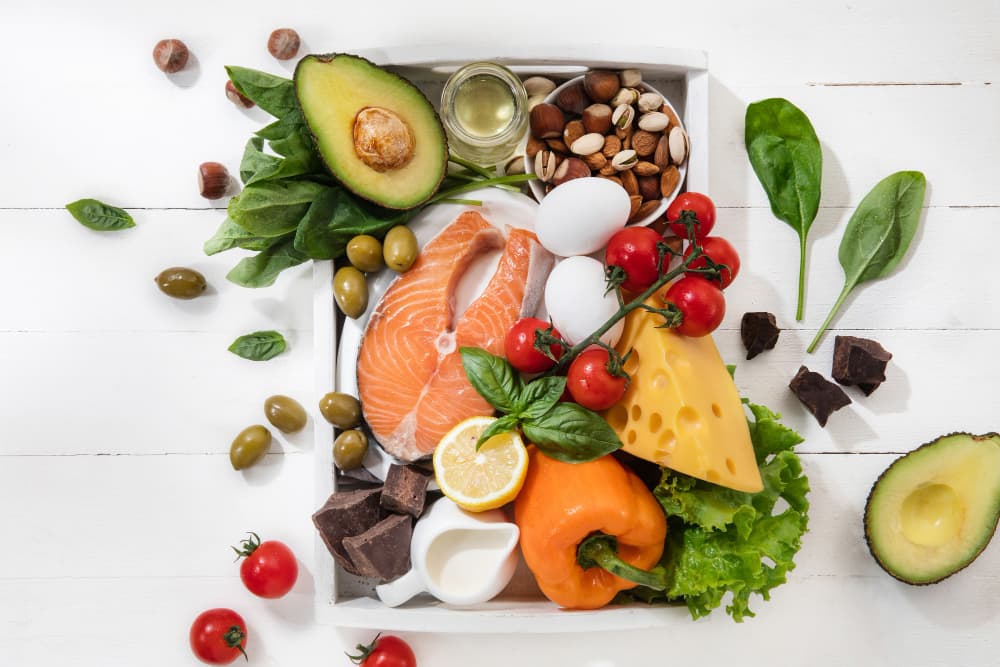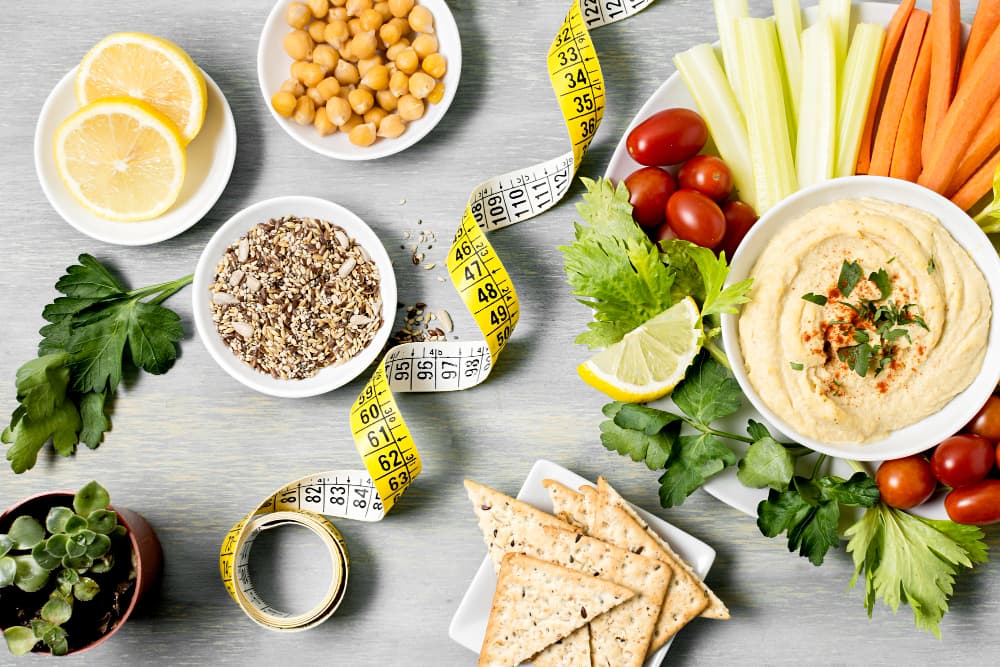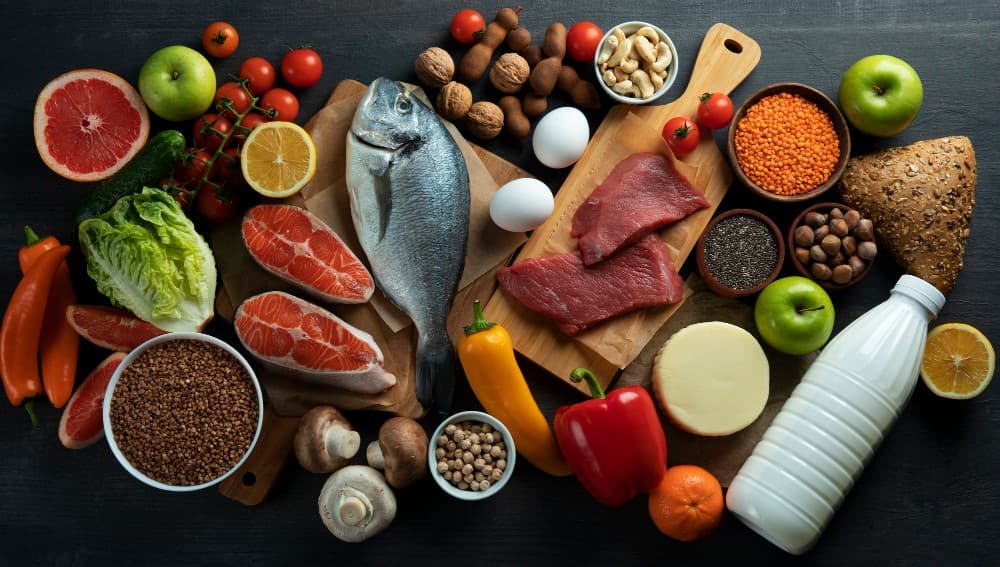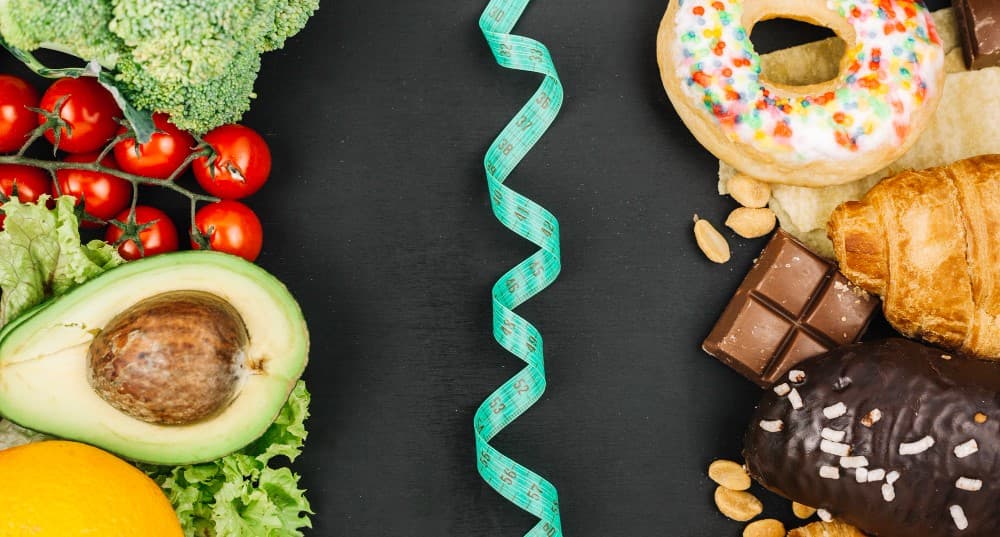What is High Volume Low Calorie Foods? With a lot of awareness regarding healthy eating these days, more and more people are becoming conscious of what type of food they consume. Gone are those days when people would just eat something because it tasted really good.
Now, before eating the food, the sourcing of the raw materials is taken into consideration, and the aesthetic presentation of the food and its calorie count are among the few parameters that are considered, even before tasting the food.
The latest trend is to consume high-volume low-calorie foods. These kinds of foods support the concept of volume eating, and it helps one to gain better nutrition and avail health benefits in the long run.
In many cases, it is also considered a healthier dieting tool as it often helps in weight loss.
What is Volume Eating?
Volume eating is a carefully curated strategy that helps you lower your calorie intake while consuming more food. Absurd as it may sound, it is true!
The concept of volume eating revolves around the inclusion of high-volume low-calorie foods in your diet, which leave you feeling fuller and satisfied for a long period of time.
This, in turn, makes you eat less overall throughout the day and, in the long run, helps you in your weight-loss journey.
You also become more conscious of your eating habits and choose wisely what to eat and what to skip.
What are High-Volume Low-Calorie Foods?
There are some specific foods that fall in this category of high-volume, low-calorie foods. They have certain characteristics that set them apart. These foods usually have the following characteristics:
High Fibre Content
High-Volume Low-Calorie Foods generally have a high fibre content that makes them ideal for your digestive system and gut health.
Foods rich in fibre content do have the ability to keep you fuller for longer time spans, in turn reducing your food intake.
Fiber-enriched foods help you have a cleaner digestive tract by regulating your bowel movements and reducing inflammation.
They also help in keeping your cholesterol levels in check, which eventually helps you to maintain a healthy weight in the long run.
High Water Density
High-volume, Low-Calorie Foods have a higher percentage of water in them. This includes many fruits and different types of vegetables.
The water content in these foods keeps you hydrated and gives you a feeling of being full without adding to the calories. This helps in reducing your urge to stuff yourself with food.
Low-Fat Content
High-volume, Low-Calorie Foods are generally low in fat content. Fat is considered to be a high-calorie energy source.
Hence, these foods enable you to reduce your calorie intake while providing the essential nutrients to you.
High Nutrient Density
These foods are packed with nutrients, meaning that they are a storehouse of the required vitamins and minerals and, at the same time, have a low-calorie count.
This helps your body function effectively without the loss of energy.
High Protein Content
One of the most essential macronutrients is protein. It regulates the metabolism in our body. Protein-rich foods take longer than normal to break down in the body, keeping it fuller for a larger amount of time.
This reduces the unnecessary food cravings that we generally tend to have.
Examples of High-Volume Low-Calorie Foods
Below are some popular foods that are High-Volume and low-calorie in content:
Broccoli:
This vegetable is nutrient-dense and has a low-calorie count. It is also rich in vitamins and has a high fibre content.
Cauliflower:
This is another vegetable that is packed with nutrients and not with calories. It can be used as a substitute for various high-calorie foods, including rice and pizza crust, mainly due to its versatility.
Strawberries:
It is one of the tasty, nutrient-rich fruits that is a must-have in your list of High-Volume, Low-Calorie foods. This fruit has a high fibre content and is rich in vitamin C and antioxidants as well.
It can be eaten directly as a snack, or you can also use it in a variety of recipes.
Popcorn:
The mention of this snack in this list may have left you with many questions. Surprisingly, this seemingly unhealthy snack has high fibre content.
The only catch is you need to bring the kernels and pop them yourself instead of buying the pre-packaged microwave popcorn.
Zucchini:
This versatile vegetable that blends in with various recipes has a high fibre content and is low on calorie count. You can use it in your noodles and sandwiches, and you get fuller foods.
Watermelon:
This juicy fruit is what your body needs in the summer. It is enriched with different vitamins and minerals and can be eaten as a snack. It can also be blended into smoothies as well.
Carrots:
This is a high-fiber-rich root vegetable that is generally eaten as a salad. It is also a storehouse of vitamin A and potassium.
Mushrooms:
This is a versatile food that is low in calories and rich in vitamins and antioxidants. It can be eaten in different forms and is generally eaten in salads and soups.
Chicken Breast:
This is one of the leanest sources of protein and low calories. It gives you a feeling of fullness while being easy on your health.
Egg Whites:
These have low calories and are used in many different types of recipes due to their versatility. They are also a rich source of protein.
Chia Seeds:
These seeds are packed with nutrients and are used in many different dishes ranging from smoothies to salads. They are rich in omega-3 fatty acids and have high fibre content.
Brown Rice:
It is rich in carbohydrates and has a low-calorie count. It is also used as a base for many dishes and gives you quite a fulfilling feeling.
Lentils:
These legumes have high fibre content and are also rich in proteins. They are generally eaten as stews and curries and leave you satiated.
White Fish:
White fish like cod, tilapia, and haddock are a great source of protein and make up a healthy and full meal for non-vegetarians who like seafood.
Greek Yoghurt:
This is one the best sources to replace your regular snacks as it is low on calorie count and has a refreshing taste.
Cottage Cheese:
An excellent source of protein, this can be quite healthy if eaten in the right amounts, and it is used in quite a few mouth-watering recipes.
Perks of Volume Eating
With so much talk going on about the type of food that we consume, you must be left wondering what exactly the advantages of consuming these high-volume, calorie foods are. There are many benefits of having these foods in your diet:
- These foods make you feel fuller and leave you satiated. This helps you to keep up with your planned diet and facilitate the desired weight-loss results.
- Since the high volume low-calorie foods are nutrient-rich, they help in improving your health. With a healthy body, you are more immune to diseases, and it means less chance of you falling sick!
- Volume eating also increases metabolism and improves your digestion. This helps in an easy and regulated bowel movement, providing comfort to you.
- Eating High-Volume low-calorie foods is also very convenient for you as it mainly includes fresh fruits and vegetables, and this type of food is easy to cook.
Tips for Volume Eating
Here are a few tips to help you with volume eating:
Shop Smart
Include the High-Volume Low-Calorie foods in your shopping list and plan your shopping accordingly. If you shop for such food, you will ultimately end up cooking and consuming this type of food.
While shopping for snacks, opt for healthy snacks like nuts and seeds, fruits and vegetables, etc., which you can eat when hungry.
Opt for locally produced organic foods and avoid navigating to the aisles that have unhealthy food stocked for you.
Lastly, avoid going shopping on an empty stomach and try not to shop impulsively.
Meal Planning
To have an effective volume of eating, you need to plan your meals ahead. If you plan your meals and snacks in advance, you get ample time to decide what you can eat.
You can then make a healthy meal balance out the nutrients with taste, and try out exciting recipes for your meals.
Control Portions
Even though High-Volume Low-Calorie Foods are more in quantity, you still need to focus on your portion size and make sure that you consume everything optimally and not in excess.
You can opt for foods that are fulfilling. For example, you can add more lettuce leaves to your sandwich.
Apart from this, you must use smart methods like measuring your calorie intake, using smaller plates and spoons, and tricking your mind that you have eaten more.
You should also check the food labels before making any purchase.
Slow Down and Savour
If you want to practice effective volume eating practices, then you must slow down a bit. You must chew properly and taste every bit of your food before swallowing it.
You should also take some breaks in between the bites and look out for signs of fullness and satisfaction.
This way, you can enjoy your food and at the same time get the maximum benefits of volume eating.
Another important point is that you must avoid eating your meals in front of the TV or while scrolling on social media, as you are not mindful of what you eat as you are distracted.
This will eventually have you eating more than what is required.
Be Patient
Good things take time, and incorporating these tactics into your routine will take some time. It will take more than just your patience to achieve consistency. You also need to have dedication and a strong will to continue with these habits.
However, you must remember that you will be more than happy when you achieve success and your desired efforts.
You should set small and achievable goals and make sure you strive to complete them. You should also keep track of your progress and review your success periodically.
Likewise, you should also look out for your setbacks and try to overcome them. These small milestones are going to help you in the long run eventually.
Common Mistakes
High-volume, Low-Calorie Foods are seen as a dieting tool with a high potential. However, there are a few common mistakes that you should avoid while practicing volume eating.
- Overeating Raw Food: You need to be careful while adding the amount of raw food, like vegetables, including cabbage, kale, lettuce, etc. as these may cause bloating and gases when consumed in excess.
- Focusing on Restrictions: Volume Eating does not mean taking away all the fun foods from your diet and stuffing only the healthy, High-Volume Low-Calorie Foods. You also need to include some of your comfort food in the list so that the diet remains a balanced one.
- Neglecting Important Macronutrients: In the quest to add more volume to your food, it may so happen that the amount of nutrients that you consume may be reduced. You need to consume balanced amounts of proteins, fats, and carbohydrates along with raw fruits and vegetables.
- Always Adding Volume: It is good to stick to your plan of consuming healthy food. However, it is okay to have a cheat day and eat something of your choice. You can treat yourself once in a while.
Conclusion
You can choose to opt for volume eating by consuming High-Volume, Low-Calorie Foods as a part of your diet. This will not only help you feel fuller for longer durations of time but will also help you achieve your fitness goals in a short span.
You need to consume nutrient-rich food to stay healthy and plan in advance to achieve the best results. However, you should not overdo things and enjoy your meals. It is also alright to have a cheat day or two!
By making use of the correct strategies and the right number of balanced meals, you can achieve your fitness goals. Happy Cooking and Eating!
Frequently Asked Questions(FAQ’s)
Q: What foods are high in volume but low in calories?
A: Vegetables like broccoli, cauliflower, and leafy greens, fruits such as watermelon and berries, and foods like soups, salads, and certain whole grains like popcorn.
Q: What foods keep you full but are low-calorie?
A: High-fiber foods like legumes, whole grains, and fruits, as well as lean proteins such as chicken, turkey, tofu, and fish. Vegetables, especially those with high water content, also contribute to a feeling of fullness without adding many calories.
Q: What is the volume of eating fewer calories?
A: Volume eating with fewer calories involves consuming foods that have a large volume or bulk but are low in calories. This approach often focuses on foods high in fiber and water content, allowing you to eat larger portions while keeping calorie intake in check.
Q: What foods are low in calories but high in fat?
A: Avocados, nuts, seeds, and oils. While nutrient-dense, these foods should be consumed in moderation due to their calorie content.
Q: High volume low-calorie snacks
A: Air-popped popcorn, vegetable sticks with hummus, Greek yogurt with berries, and fruit salads can be filling yet low in calories.
Q: High volume low-calorie foods for weight loss
A: Vegetables like zucchini, cauliflower, and spinach, as well as fruits like berries and melons. Lean proteins such as chicken breast and fish, along with whole grains like quinoa, can also be part of a low-calorie, high-volume diet.
Q: High volume low calorie foods vegetarian
A: Legumes such as lentils and chickpeas, tofu, other soy-based products, leafy greens, and colorful vegetables can provide essential nutrients while keeping calorie intake relatively low for vegetarians.
Q: High-volume meals under 300 calories
A: Grilled chicken or tofu with steamed vegetables, large salads with mixed greens, lean protein, and a light vinaigrette, or vegetable stir-fries with a modest amount of tofu or shrimp can be filling yet low in calories.
Q: High volume low-calorie meal plan
A: A variety of salads with lean protein sources, vegetable-based soups, stir-fries with non-starchy vegetables, and moderate servings of fruits and whole grains can create a satisfying meal plan while keeping calorie intake low.
Q: High volume low-calorie dinner
A: Grilled fish or chicken with roasted vegetables, vegetable stir-fries with tofu or shrimp, or zucchini noodles with marinara sauce can be flavorful and satisfying dinner options while remaining low in calories.
Q: High-volume low-calorie lunch
A: Salads with colorful vegetables, grilled or roasted protein, and a light dressing, as well as wraps made with whole-grain tortillas, lean protein, and plenty of vegetables, can be filling and low-calorie lunch choices.
Recent Posts
- Whole Foods Cookies: A Comprehensive Guide
- How Long Does it Take for Moringa to Start Working
- Honey as Pre-workout: A Complete Guide
- Can Collagen Cause Acne: Understanding Collagen and Acne

